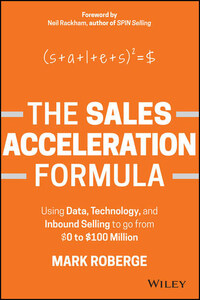Cover design: Wiley
Copyright © 2015 by HubSpot, Inc. All rights reserved.
Published by John Wiley & Sons, Inc., Hoboken, New Jersey.
Published simultaneously in Canada.
No part of this publication may be reproduced, stored in a retrieval system, or transmitted in any form or by any means, electronic, mechanical, photocopying, recording, scanning, or otherwise, except as permitted under Section 107 or 108 of the 1976 United States Copyright Act, without either the prior written permission of the Publisher, or authorization through payment of the appropriate per-copy fee to the Copyright Clearance Center, 222 Rosewood Drive, Danvers, MA 01923, (978) 750-8400, fax (978) 646-8600, or on the web at www.copyright.com. Requests to the Publisher for permission should be addressed to the Permissions Department, John Wiley & Sons, Inc., 111 River Street, Hoboken, NJ 07030, (201) 748-6011, fax (201) 748-6008, or online at www.wiley.com/go/permissions.
Limit of Liability/Disclaimer of Warranty: While the publisher and author have used their best efforts in preparing this book, they make no representations or warranties with respect to the accuracy or completeness of the contents of this book and specifically disclaim any implied warranties of merchantability or fitness for a particular purpose. No warranty may be created or extended by sales representatives or written sales materials. The advice and strategies contained herein may not be suitable for your situation. You should consult with a professional where appropriate. Neither the publisher nor the author shall be liable for damages arising herefrom.
For general information about our other products and services, please contact our Customer Care Department within the United States at (800) 762-2974, outside the United States at (317) 572-3993 or fax (317) 572-4002.
Wiley publishes in a variety of print and electronic formats and by print-on-demand. Some material included with standard print versions of this book may not be included in e-books or in print-on-demand. If this book refers to media such as a CD or DVD that is not included in the version you purchased, you may download this material at http://booksupport.wiley.com. For more information about Wiley products, visit www.wiley.com.
Library of Congress Cataloging-in-Publication Data:
Roberge, Mark.
The sales acceleration formula: using data, technology, and inbound selling to go from $0 to $100 million / Mark Roberge.
pages cm
Includes index.
ISBN 978-1-119-04707-0 (hardback); ISBN 978-1-119-04717-9 (ebk); ISBN 978-1-119-04701-8 (ebk)
1. Sales management. 2. Selling. I. Title.
HF5438.4.R58 2015
658.8'1–dc23
2014039741
Sales doesn't get any exemption from the curse of living in interesting times. Everyone recognizes that today we face unprecedented challenges: the consequences of the Internet and e-commerce, the increasing power and sophistication of purchasing, the effects of globalization. There's no shortage of “interesting” challenges confronting sales organizations, sales managers, and their salespeople.
Now stir another nasty difficulty into the mix. Sales is suddenly in the strategic spotlight. Boardrooms across the world are looking more closely at sales strategy than ever before. What's driving this new interest? There are several reasons, but two factors stand out above the others. The first is the huge increase in competition. Today no niche is safe. There's an oft-quoted figure that the average company today has twice as many competitors as it had five years ago. Nobody knows how true this is, but many experts – myself included – believe it to be so. Assuming the figure is valid, that's another way to say that, statistically, the average company's market share has been cut in half. The second factor is the precariousness of the strategy that most companies have relied on to counter the effects of hypercompetition. Ask the average company to tell you its primary strategy for success in a competitive world. I did just that recently at a meeting of corporate strategists. More than 70 percent responded that their strategy was “innovation.” And, in response to my follow-up question, “Is it working?” more than half said that it was not.
Now I don't want to knock innovation. It's a fine strategy if you can pull it off, and every company is forced to continuously innovate or risk going out of business. It's just that the knee-jerk response to competition has been to innovate, and, as many organizations have found, innovation has its downside. For one thing, it's a very hard strategy to sustain. Even Apple, the poster child of strategic innovation, may not be able to pull it off for much longer. But there's another less recognized downside, and that's the diminishing window of opportunity. The whole idea of innovation is that it gives you a competitive breathing space – a period when you have something unique and special that puts you ahead of competitors. In the good old days, a decent innovation could look forward to a year or two of advantage in the marketplace before the competition could catch up. Not so today: you're lucky if you have a couple of months at the most. As a result, many companies are questioning their reliance on innovation as a growth strategy.








